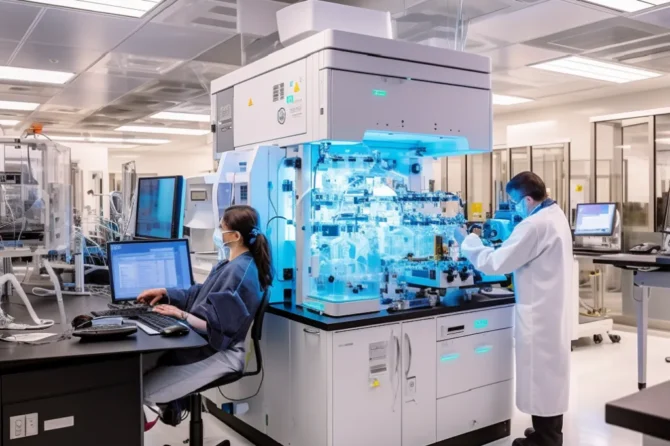The Global DNA and Gene Chip Market is poised to experience substantial growth, with a projected compound annual growth rate (CAGR) of 11.4% from USD 5.84 Billion in 2020 to USD 14.03 Billion in 2028. This remarkable growth is primarily driven by the widespread application of DNA and Gene Chips across various conventional and non-conventional fields.
DNA and Gene Chips have emerged as a superior alternative to traditional methods due to their ability to comprehensively and simultaneously analyze tens of thousands of DNA sequences. This versatility has led to their adoption in genomics, personalized medicine, drug discovery, agriculture, forensic science, and more.
The significance of DNA and Gene Chips in the field of oncology cannot be overstated. With cancer being the second leading cause of death worldwide, claiming approximately 10 million lives annually, the use of DNA and Gene Chips enables early-stage diagnosis and eliminates the need for invasive procedures like biopsies. This breakthrough technology has transformed the landscape of cancer diagnosis and treatment planning.
The market’s growth is also fueled by continuous advancements in genetic research and technology. Next-generation sequencing and microarray technologies have revolutionized the analysis of genetic information, enabling faster, more accurate, and cost-effective analysis. This has significantly expanded the applications of DNA and Gene Chips and contributed to their increasing adoption.
The rising prevalence of genetic disorders and diseases has created a demand for DNA and Gene Chips in diagnosis, prognosis, and treatment planning. These chips have the capability to detect and analyze genetic variations and mutations, facilitating personalized medicine approaches. With conditions like cancer, cardiovascular diseases, and genetic abnormalities on the rise, DNA and Gene Chips play a crucial role in addressing these healthcare challenges.
Investments in genomics research have played a pivotal role in driving the development and adoption of DNA and Gene Chips. Governments, research institutions, and pharmaceutical companies are channeling resources into genomics research, funding research projects, collaborations, and product development. This has accelerated advancements in the field and propelled market growth.
However, the DNA and Gene Chip Market does face certain challenges that need to be addressed. The high costs associated with these chips, including equipment, reagents, and analysis software, may limit their accessibility, especially for smaller research laboratories and clinics or resource-constrained settings.
Ethical and regulatory considerations also come into play with the use of DNA and Gene Chips. Privacy, data protection, and consent issues need to be carefully addressed to ensure the adoption and acceptance of these chips. Regulatory frameworks play a crucial role in shaping the market’s growth trajectory.
The vast amount of genetic data generated by DNA and Gene Chips presents challenges in interpretation and data analysis. The complexity of analyzing and deriving meaningful insights from large datasets poses hurdles for researchers and clinicians, impacting the adoption and utilization of these chips. Efforts should focus on developing robust data analysis methods to unlock the full potential of genetic information.
Standardization and quality control measures are essential to ensure the reliability and reproducibility of DNA and Gene Chips. The lack of standardized protocols in the field poses challenges, and establishing guidelines for quality control will be crucial for the market’s sustained growth.
In conclusion, the DNA and Gene Chip Market is expected to witness significant growth in the coming years. However, addressing cost concerns, ethical and regulatory considerations, data analysis challenges, and standardization issues will be vital to maximize the market’s potential. As advancements in genetic research continue and the applications of DNA and Gene Chips expand, the market is poised for a promising future.
If you need more information on this article click on the link below. This link will provide more extensive information and elaborate on the topic.
Click here to view original web page at www.reedleyexponent.com





